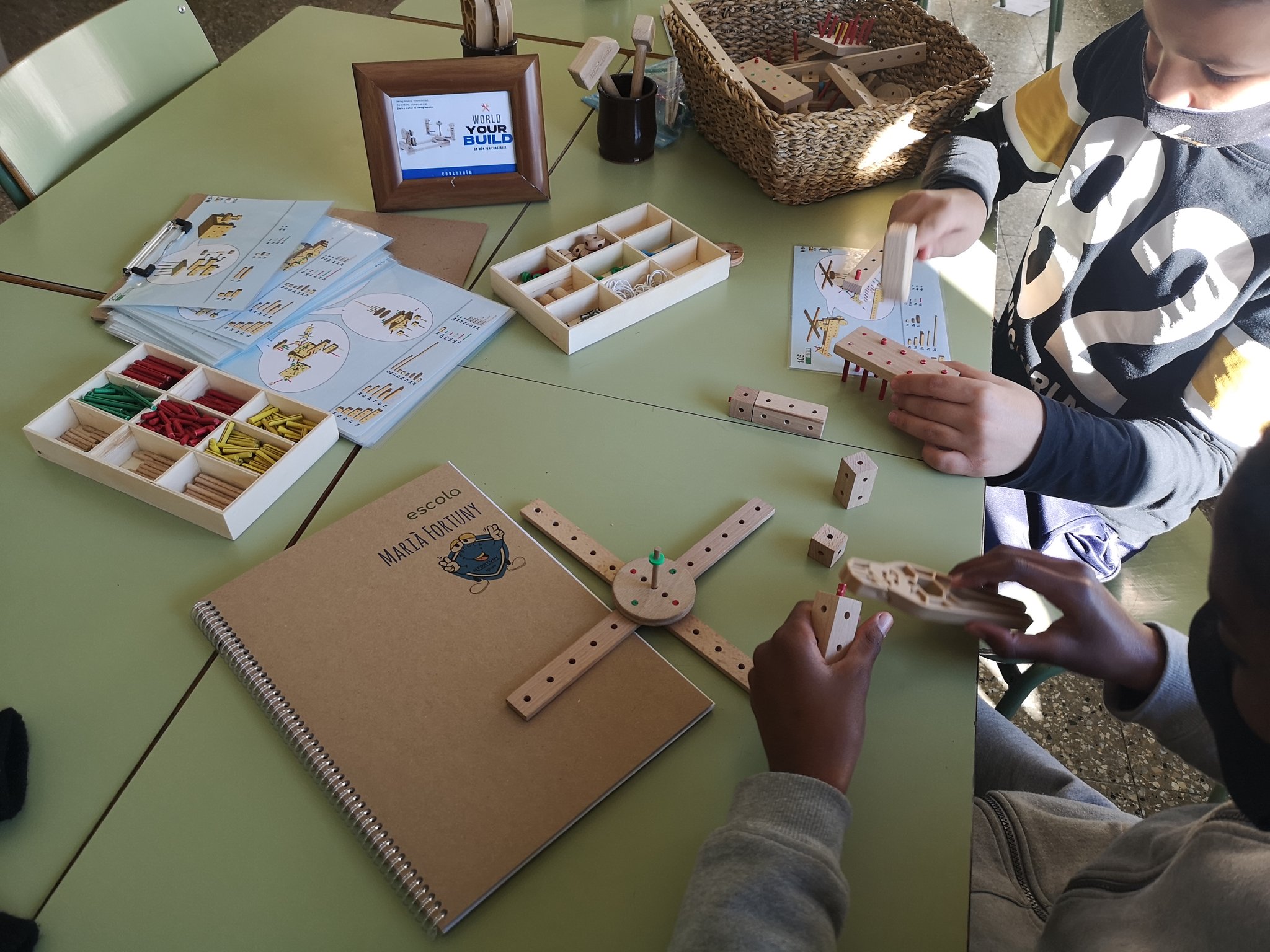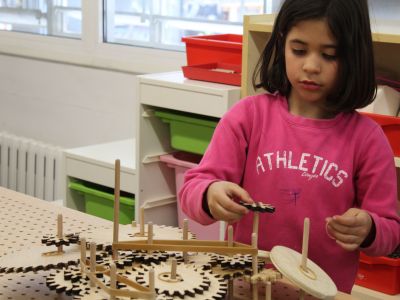5 reasons to be a Magnet partner
21/01/2021

The Magnet programme is a proposal for a partnership association between a school and a leading institution in a field of knowledge. The goal of the alliance is to deliver a quality education project that is appealing to families, that will serve as a benchmark in the area and, moreover, that will help boost the academic achievement of pupils from the school.
The spectrum of contributions that are generated in schools as a result of Magnet alliances covers a wide range of spheres, including strengthening the education project; enacting experience- and skills-oriented learning situations based on proposals from the institution; and becoming an appealing primary or secondary school to families from the local area.
However, for Magnet partners what does forming part of this transformative education project mean? Research centres, museums, university schools or institutions from various spheres taking part in the programme as partners perform a highly significant function: bringing their knowledge into schools to enhance the project and lend it a more skills-oriented and globalised perspective.
We asked a number of Magnet partners to tell us directly what the Magnet alliance they are part of enables them to achieve on the basis of their experiences.
1. Actively delivering their commitment
“We at the Bioengineering Institute of Catalonia (IBEC) view being a Magnet partner as meaning getting involved with an innovative education project that is highly attuned with our values, social responsibility, cooperation with various agents, and the promotion of creativity and ingenuity”. Pilar Jiménez, IBEC in partnership with Gayarre School (Barcelona)
“Any scientist from the Institute of Marine Sciences (ICM) will tell you that they love their job, just as teachers will, and in this respect we believe that there is a wealth of values inherent to our work which we can convey, such as thoroughness, enthusiasm, passion for work, curiosity, the desire to learn and – in our specific case – awareness of the marine environment.” Vanessa Balagué, the ICM attached to the Spanish National Research Council (CISC) in partnership with Tanit School (Santa Coloma de Gramenet)
2. Building innovative education experiences jointly with schools
“The essential aspect that the CIM-UPC can provide to this Montessori school is that we are experts in making manufacturing accessible; accordingly, we are providing pupils with a highly powerful tool, whereby they are set goals and the pupils make them become reality through manufacturing.” Felip Fenollosa, CIM-UPC in partnership with Montessori School (Rubí).
“We have many school visitors, but they come and go and do not stay with us for a long period. As a result, Magnet provides the remarkable opportunity to benefit from a friendly school to partner with for at least three academic years, sharing projects, questions and challenges. Magnet is an example of what is ideal; and what would be ideal would be to always benefit from very qualitative relations which lead to an enhancement of professional associations and, in this case, an enhancement of relations where knowledge is transferred to pupils.” Lluís Noguera, director of Cosmocaixa in partnership with Miralletes School (Barcelona).
A submarine at Tanit School, an example of a Magnet activity
Tanit school in Santa Coloma de Gramenet had a submarine at their school for several days. The aim of this resource pertaining to the ICM – the school’s partner on the Magnet project – is to disseminate its knowledge. Thanks to this workshop, researchers showed pupils how to become major observers, a trait that is hugely relevant for learning. However, before this visit the teachers had trained and learnt in cooperation with the ICM professionals and the pupils had worked in class on a number of projects linked to these areas of knowledge, such as various habitats, sea creatures, recycling, life at sea, etc.
3. Acquiring expertise and experience in networking that will prove useful for them in other contexts and at other times
“For us, the Magnet project has completely changed how we conceive and reconsider the institution, our public cultural facilities and, in particular, education services.” Anna Camps, Filmoteca de Catalunya in partnership with Pau Casals School (Rubí).
“Magnet has afforded us the opportunity to engage with other institutions who share our desire to be involved in the world of education.” Sandra Bestratén, Association of Architects in partnership with Camps Elisis School (Lleida) and Marià Fortuny School (Reus).
4. Promoting ourselves among the school’s education community and among society in general
“The Museum is a setting that generates knowledge about locally-important issues; we are a local museum; we are a museum that reflects deeply on our natural and cultural environment and this entails also forming a bond with the environment, just as we are developing an association with our partner secondary school.” Carles Garcia, the Ter Museum in partnership with Ter college (Manlleu).
“With a facility such as ours, with expertise in solving problems in industry, science and life in general through mathematics, we are in a position to bring this perspective into the school setting.” Lluís Alsedà, Mathematical Research Institution in partnership with Joaquim Blume School (Sabadell).
Peramàs School is drawing up an interactive map of the birds of Mataró: an example of scientific dissemination
Birds are a testimony to the quality of ecosystems, and by monitoring them we can benefit from a warning system about the condition of our environment. Consequently, and on the occasion of World Environment Day on 5 June 2020, through its Magnet partnership with the Centre for Research on Ecology and Forestry Applications (CREAF) Josep Manuel Peramàs School in Mataró suggested to pupils that they should come and discover the birds in the capital of El Maresme region. Pupils from the school conducted almost one hundred observations which have resulted in the production of an interactive map.
5. Improving internal coordination by involving various professional teams or departments in a joint project
“The association is so close-knit that not only does it encompass the local employees of the museum along with those undertaking training placements, the director also takes part in teachers’ assembly meetings – whenever possible – and he talks about the students and the institution in the first person plural: “Our college. Our students.” Indeed, since the museum has fully embraced the goal of the project, rather than confining itself to acting, it has also engaged in explaining.” The experience of the Ter Museum (Manlleu) in partnership with Ter Secondary School (Manlleu).
For further information
- What does it mean to be a Magnet partner? The following video shows a number of representatives of the partner institutions involved in the programme who detail their experience.
- Download the infographic Building the partnership: the foundations of an alliance
- Institutions taking part in the Magnet programme: https://magnet.cat/institucions/
- Articles of interest: “The magnetic attraction between a school and an institution” by Víctor Saura, journalist at Diari de l’Educació.
